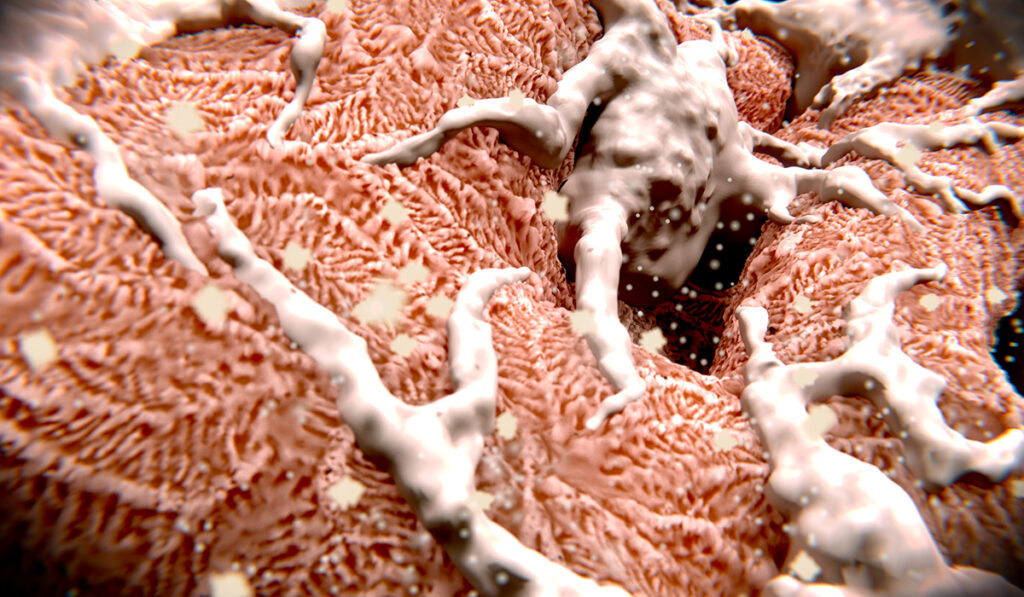Nephrotic syndrome (NS) can be caused in various ways, whenever the triad of proteinuria, hypoalbuminemia, and edema are present. Current treatments for complicated pediatric NS are only partially effective and have significant toxicity.
Preclinical studies have shown that reductions in proteinuria are possible in both diabetic and non-diabetic kidney disease through use of thiazolidinediones, developed to treat insulin resistance in Type 2 diabetes. In a case series published in Pediatric Nephrology, the addition of the TZD pioglitazone (PIO) demonstrated potential ability to enhance proteinuria reduction in eight children and young adults with NS.
“Most of the other drugs we use to treat nephrotic syndrome are immunosuppressants, and patients have to be on them for years,” said Tray Hunley, M.D., an associate professor of pediatric nephrology at Vanderbilt University Medical Center and one of the investigators in the study.
“Pioglitazone works directly on the podocyte itself, which would be a paradigm shift. This would be a nonspecific way to help the urine clear itself of protein.”
Road to Repurposing
When pioglitazone was first being used as a diabetic medicine, physicians noticed that patients’ protein levels seemed to be dropping, Hunley said.
“They thought it might be that they had better control of their diabetes, but it did seem that it was helping control protein even beyond their diabetes.”
In the late 1990s, Agnes Fogo, Ph.D., John L. Shapiro Chair of Pathology at Vanderbilt, became intrigued by some observations about pioglitazone she heard at a meeting.
“She came back and began to conduct research that showed the medication had some direct beneficial effects on glomeruli that did not have any relationship to diabetes,” Hunley said. “Data from Dr. Fogo’s lab and others began to show direct benefits in the podocytes, and there were a few adult papers where they saw a reduction in proteinuria.”
Based on these early studies, a few pediatric nephrologists began using the medication to treat nephrotic syndrome in select patients.
“This paper is the result of a handful of clinicians from around the world who bumped into each other at meetings and started talking about our experiences,” Hunley explained. “We’re fully cognizant that this is eight patients at eight different stages; it’s a case series where we saw good effects in a medicine used in a different way.”
Series Results
Data on the patients were tracked for six months. Five of the eight PIO-treated patients had quick and significant reductions in proteinuria, while three patients had worsened proteinuria after PIO was begun. The urine protein-creatinine ratio (UPCR) in responders decreased within the first month of PIO treatment by 62 percent. By five to seven months post-PIO, the UPCR had dropped even further, to a mean reduction of 97 percent.
Among the responders, the mean serum albumin had increased in one month by 45 percent and showed a further 77-percent mean increase. Among nonresponders, the increased serum albumin in one patient was thought to be attributable not to reduced proteinuria but to a progressive decline in kidney function.
“Because pioglitazone is a diabetes drug, there’s an obvious concern that it might lower blood sugar. In our study, it did not lower patients’ blood sugar,” Hunley noted.
The dramatic improvements in proteinuria and edema in most patients led to a marked decrease in required hospitalizations. Another finding, Hunley says, is pioglitazone’s effect on prednisone.
“Pioglitazone in the podocyte may amplify the effect of prednisone so you may not need as much; there appeared to be crosstalk between the two.”
“Now, we need a clinical trial,” Hunley said. “These data may help. I wasn’t doing research when I used pioglitazone; I was trying to help a handful of patients.”
“I certainly think that the greatest leaps forward in medicine are made in the research lab, but when this was used with diabetic patients and people noted, ‘their protein is getting better,’ it prompted further investigation. It really is part of the academic process when researchers and clinicians can collaborate to discover new treatments.”





